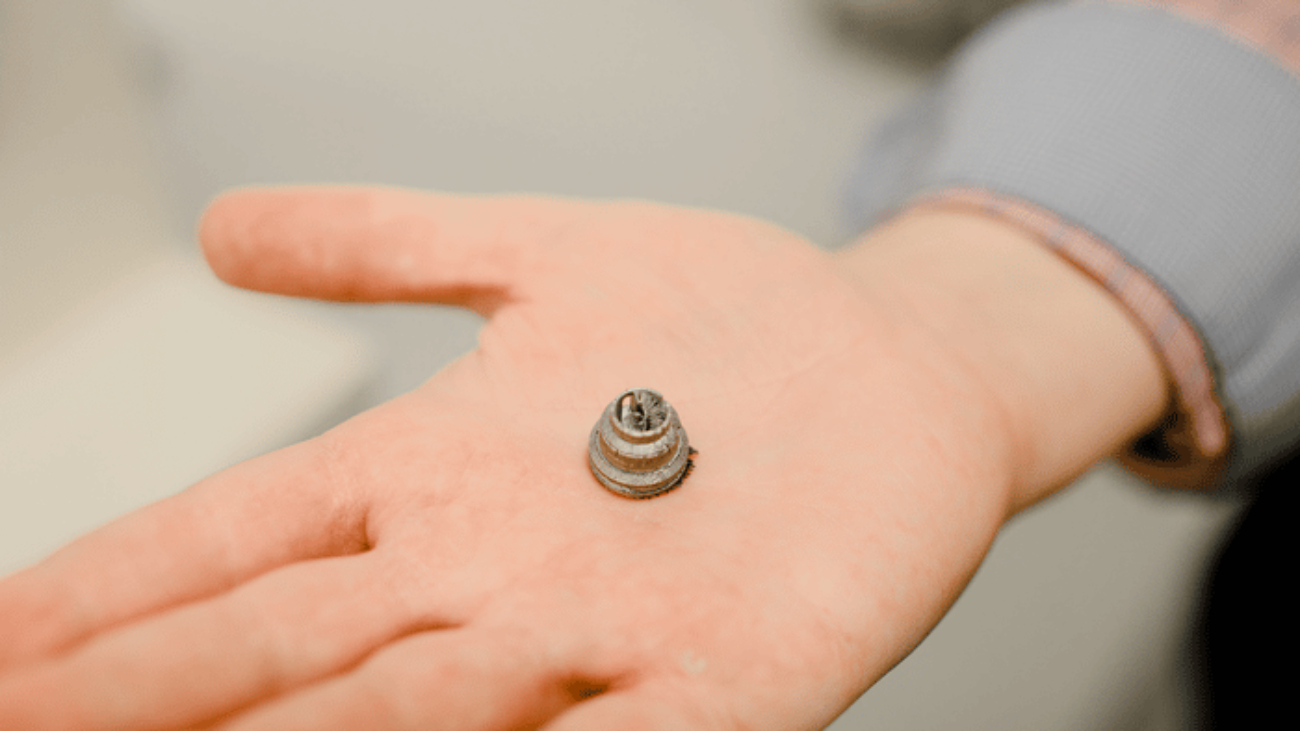Scientists from the Ural Federal University (UrFU) and the Ural Branch of the Russian Academy of Sciences are determining the optimal conditions for 3D printing permanent magnets from hard magnetic compounds based on rare-earth metals. This will make it possible to start small-scale production of magnets, in any shape, and create complex magnet configurations. Such magnets are suitable for miniature electric motors and electric generators, on which pacemakers work. In addition to this, as is typical of AM, the technology minimizes production waste and has a shorter production cycle. A description of the method and experimental results are presented in the Journal of Magnetism and Magnetic Materials.
Permanent magnets remain magnetic field sources for a long period. This property is used in a wide variety of industries and devices, such as the manufacture of modern electric motors, household and computer equipment, and other appliances. Traditional methods of manufacturing permanent magnets only allow for the creation of large products, and usually have two poles – one north and one south.
Creating complex and small magnets is not an easy task, scientifically and technically, however, as it turns out, one of the most promising ways to create complex-shaped parts from magnetically hard materials is with 3D printing. Ural scientists have managed to determine the optimal parameters for the 3D printing of permanent magnets using selective laser sintering – and magnetic powder.
3D printing makes it possible to change the internal properties of the magnet at almost all stages of production. For example, to change the chemical composition of the compound, the degree of spatial orientation of crystallites and crystallographic texture, and to influence the coercivity (resistance to demagnetization).
Manufacturing on Demand

“Making small magnets is a difficult task. Now they are created only by cutting a large magnet into pieces, because of the mechanical processing about half of the used material turns into garbage. Also, cutting introduces a lot of defects in the near-surface layer, which causes the properties of the magnet to deteriorate enormously. Additive technologies allow to avoid this and make complex magnets, for example, with one north pole and two spatially separated south poles, or a magnet with five south poles and five north poles at once. Such configurations are necessary for pacemakers, where it is only possible to assemble the rotor for an electric motor from separate magnets under a microscope,” explained Dmitry Neznakhin, Associate Professor at the Department of Magnetism and Magnetic Nanomaterials and Researcher at the Section of Solid State Magnetism at UrFU.
The Russian scientists have already succeeded in producing thin (about one millimeter), permanent magnets whose properties are similar to those of industrially-produced magnets. The base that was used was a powder containing samarium, zirconium, iron, and titanium. The compound has suitable characteristics for permanent magnets, but traditional manufacturing methods deprive the compound of most of its properties. Therefore, the scientists decided to see if the properties could be preserved through 3D printing technology.
“When creating permanent magnets based on these compounds using traditional methods, the properties of the finished products are far from the theoretically predicted ones. We found that when sintering a sample, adding a fusible powder from an alloy of samarium, copper, and cobalt allows the magnetic characteristics of the main magnetic powder to be retained. This alloy melts at temperatures lower than the properties of the main alloy change, which is why the final material retains its coercive force and density,” added Dmitry Neznakhin.
At the moment, the scientists are establishing the basic laws of formation of the microstructure and magnetic properties of hard magnetic materials, and are determining which magnetic materials can be used to manufacture permanent magnets using the SLS. This includes testing how the sintering method affects the properties of another known base for magnets – an alloy of neodymium, iron, and boron. The next stage of the work will be the production of bulk permanent magnets suitable for practical applications. The research was supported by the Russian Science Foundation (grant no. 21-72-10104).
You might also like:
Lincotek reports more than 800,000 medical devices printed: The group is family owned and has provided special services to global markets since 1973. It does this from its two innovation centers – one in Italy, focused on the medical sector, and the other in Switzerland, concentrating on industrial applications. In addition, the company also has AM plants and related R&D services in the US and, in the near future, in China too. In the medical field: plants are ISO 13485 certified and release implantable medical devices (CE and FDA); in IGT/Aviation: main production facilities are certified AS9100/NADCAP.
* This article is reprinted from 3D Printing Media Network. If you are involved in infringement, please contact us to delete it.
Author: Edward Wakefield


Leave A Comment